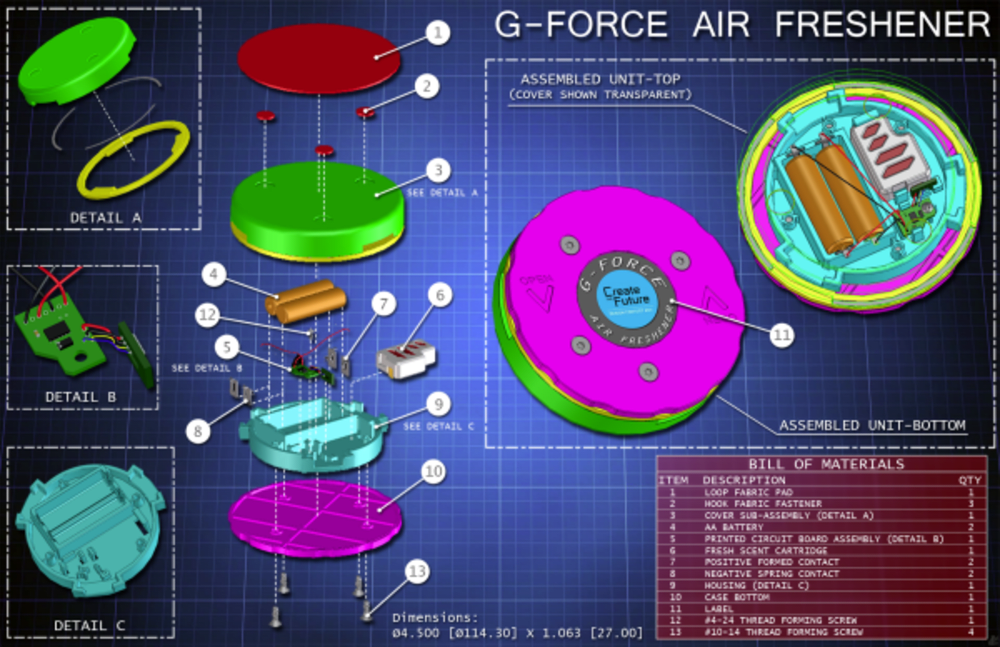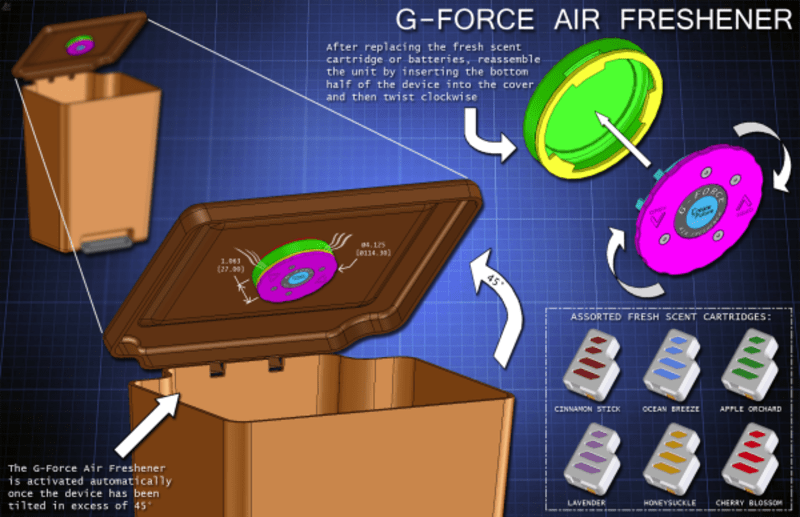The idea of the G-Force Air Freshener came about as a result of the ever present need for a fresh-scented kitchen. A typical cause of bad odor in the kitchen is waste that has been lingering in the trash receptacle for an extended period of time. The practice of discarding bagged waste prematurely (before the trash bag is full) is the currently accepted method of eliminating an unpleasant scent. Obviously, this can be uneconomical due to the unnecessary use of excess trash bags, and one can see that there is much room for improvement.
Automation in consumer products, among other industries, has truly become the theme of many of the latest creations to hit the market. Additionally, the use of accelerometer technology, especially in consumer products, has become more prevalent in recent years. This product can be viewed as an improvement upon the current automated air fresheners on the market today, with the incorporation of the aforementioned growing technology: the accelerometer. Most modern-day "automatic" air fresheners have built-in features that will give off a burst of fresh scent at a given time interval or when motion is sensed. The thought behind the G-Force Air Freshener is simple: give off a small burst of fresh scent whenever the device is subject to a change of acceleration in excess of the pre-programmed angle threshold of 45 degrees.
Throughout the development of this concept, careful attention was given to manufacturability, ease of assembly, serviceability, and ease of use to the consumer. All of the major components, with the exception of the formed sheet metal battery contacts, are considered to be commodity-grade plastic injection molded parts. These parts were designed with tool simplicity in mind, limiting the type of action required to mold each one to a "straight pull/single parting line" scheme. Additionally, all of the plastic components have been modeled to incorporate design and manufacturability intent with the incorporation of fillets, chamfers, shutoffs, draft, and typical part/assembly tolerances. As for assembly and serviceability, part count was carefully considered, with the use of only five thread-forming screws. The air freshener cartridge and circuit board both take advantage of snap features located in the plastic housing. For the consumer, installation is simple. The G-Force Air Freshener is intended to be attached to the underside of any tilting trash receptacle lid. This is done via common "hook-and-loop style" fabric fasteners located on the top cover of the device (a mating pad must first be affixed to the underside of the trash receptacle lid). Once installed, the air freshener will work automatically, being activated only when the trash receptacle is opened. In order to replace the air freshener or AA-size batteries, the consumer can simply untwist the bottom of the unit similar to the way one would open a compact disc spindle.
In conclusion, this device will enable the consumer to save money on the cost of trash bags while taking a big step in an effort to be environmentally friendly.
Like this entry?
-
About the Entrant
- Name:Mark Coster
- Type of entry:individual
- Software used for this entry:Creo Elements/Direct Modeling Personal Edition
- Patent status:none





